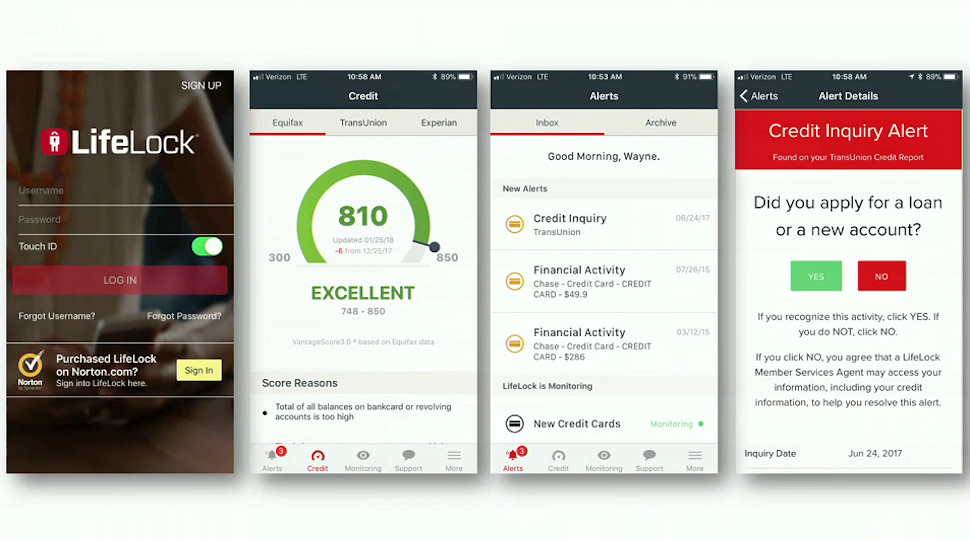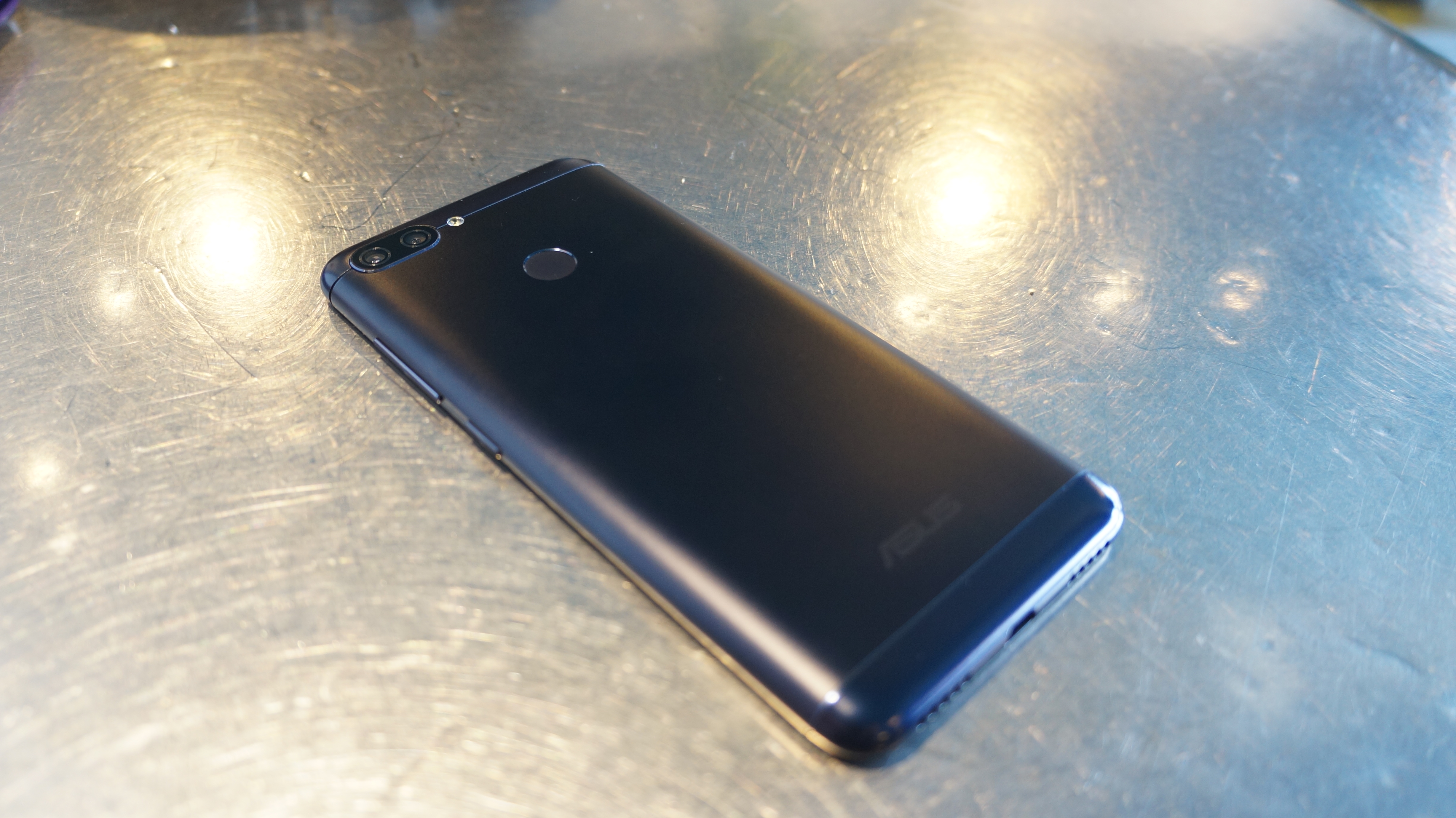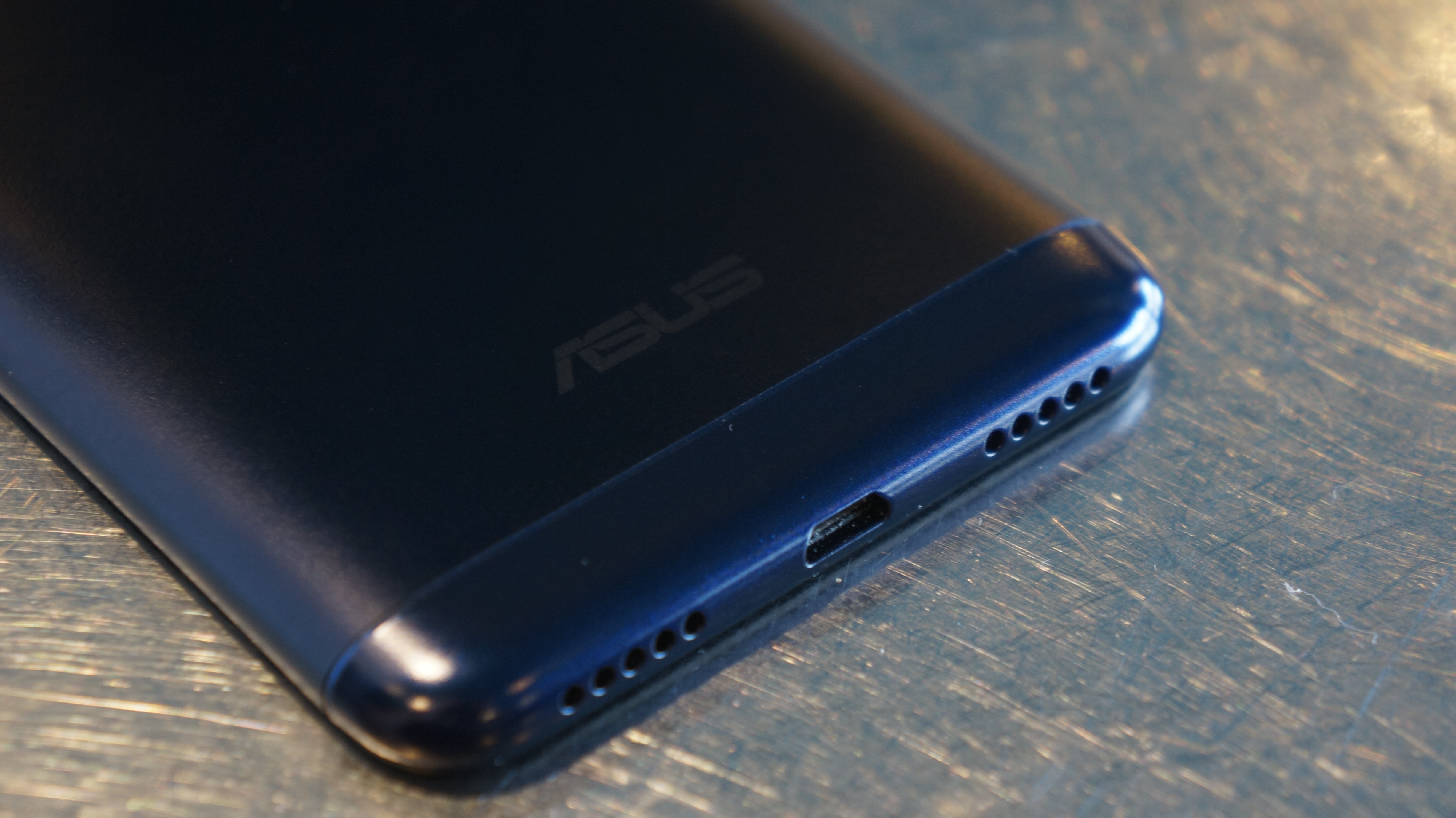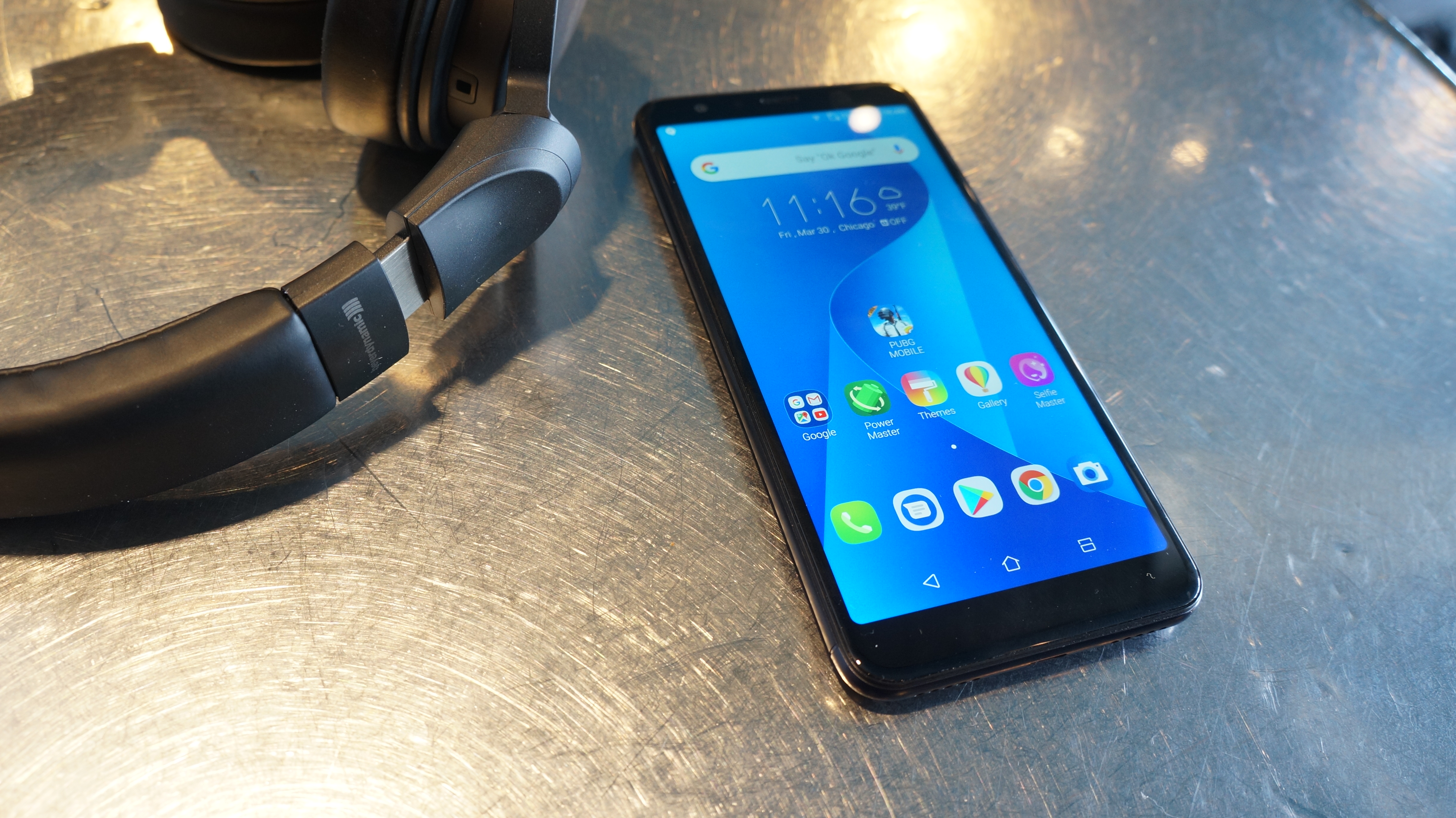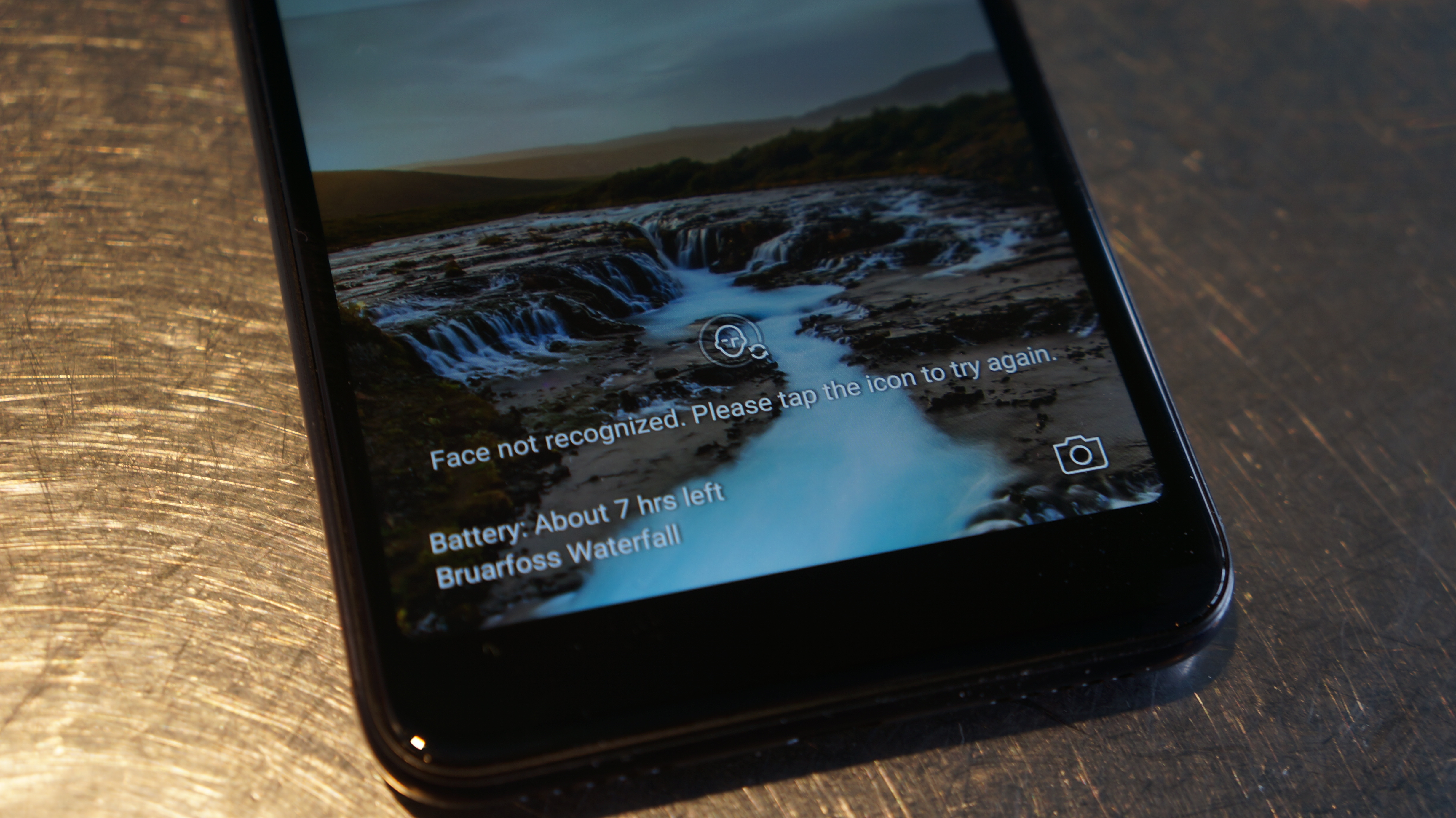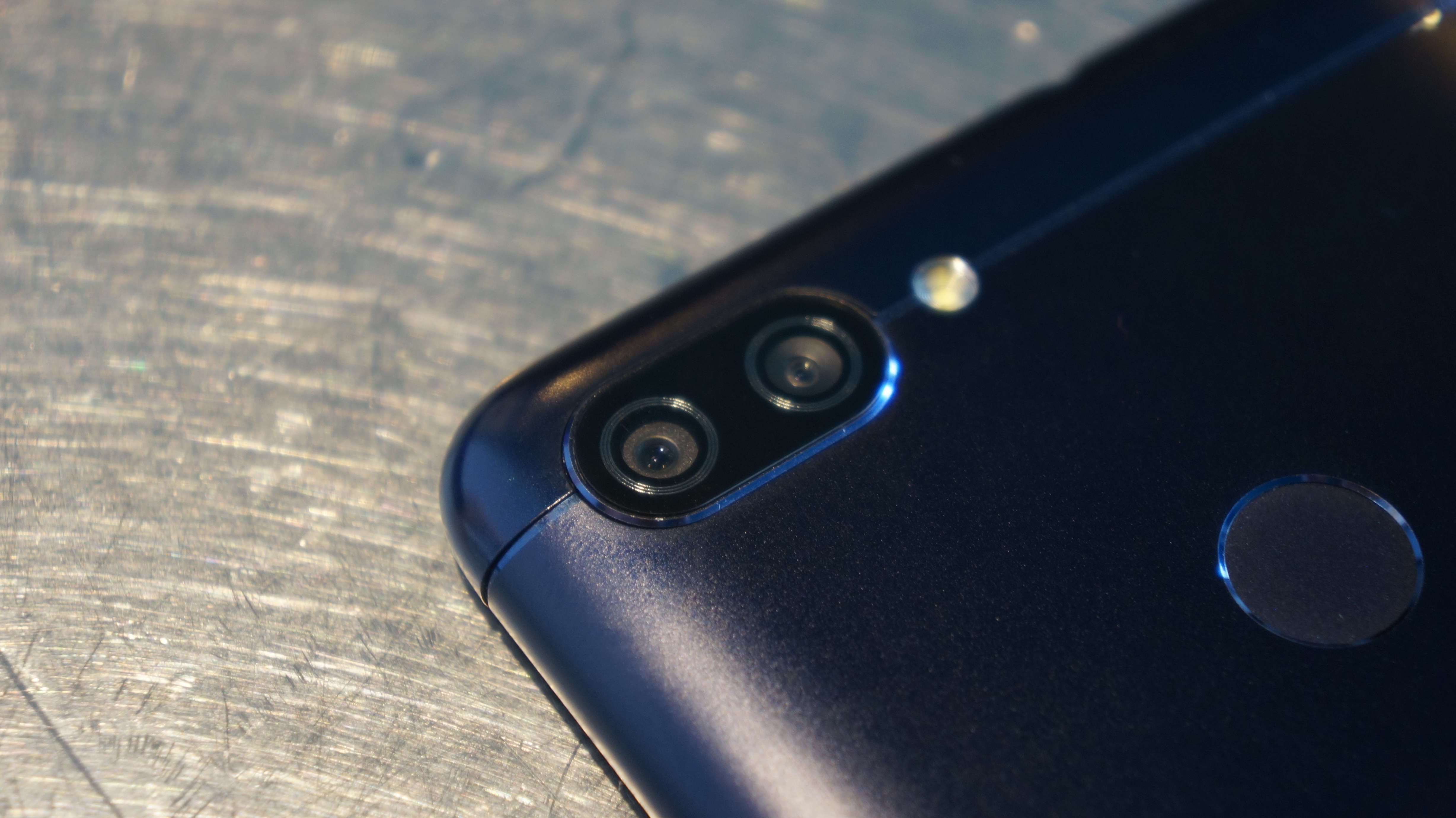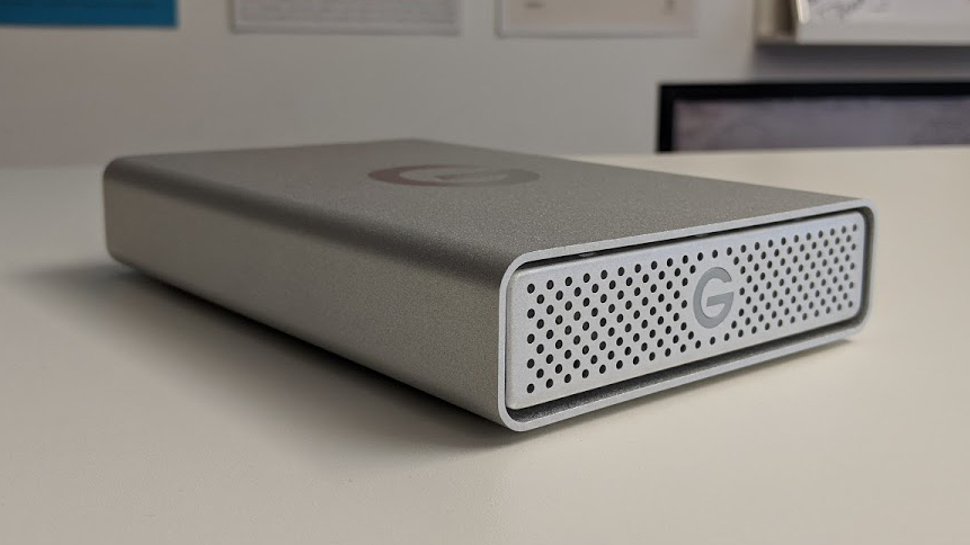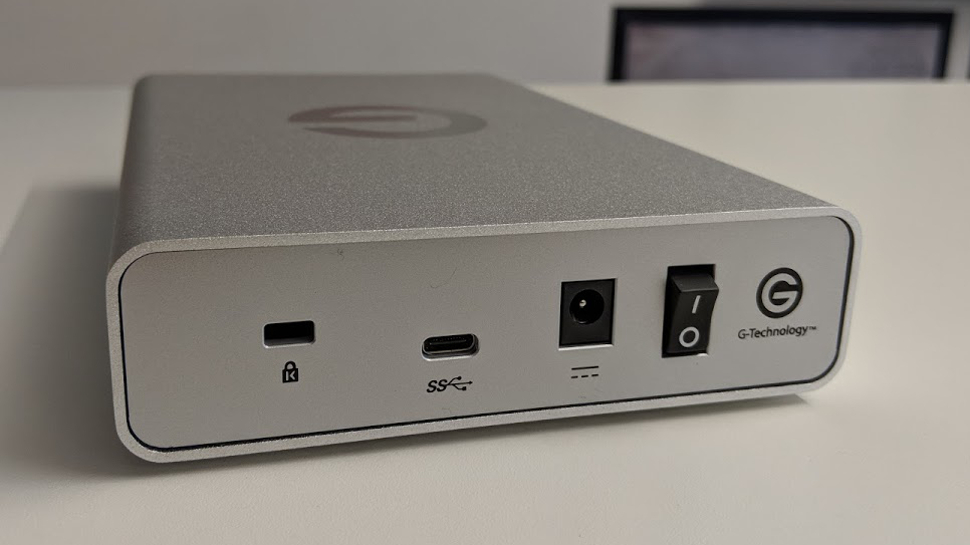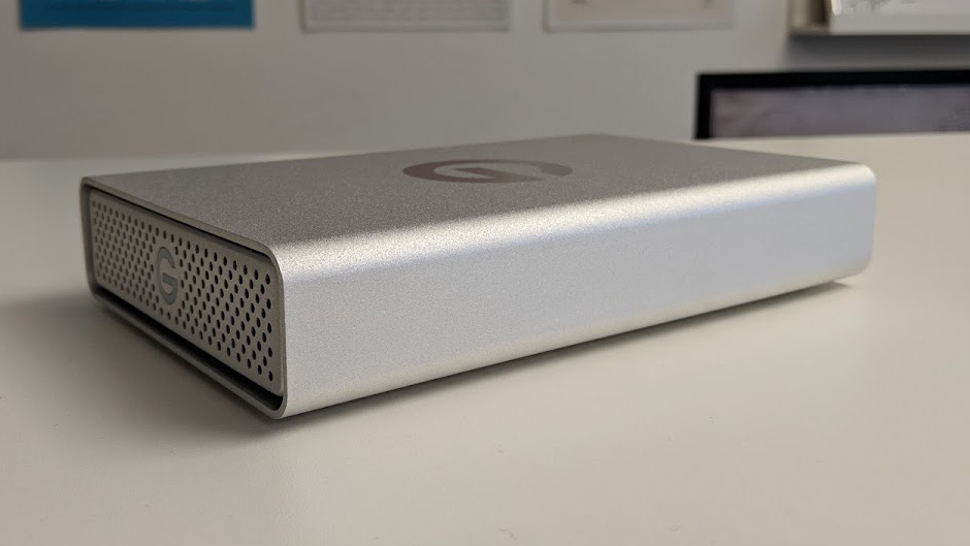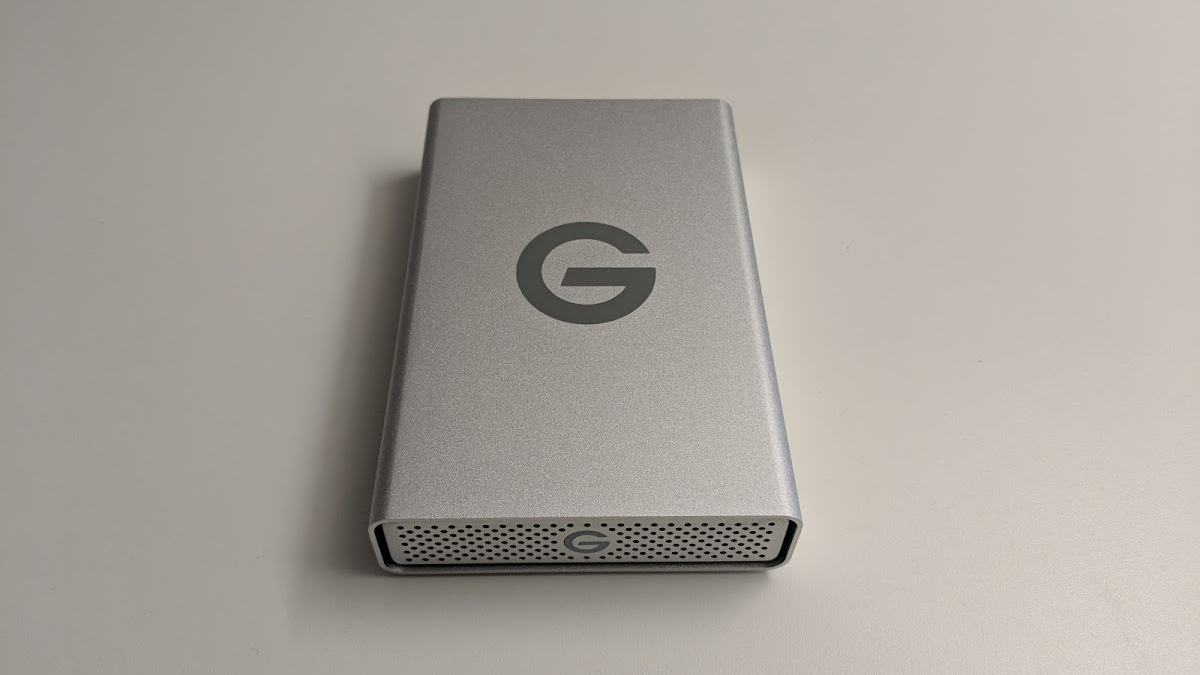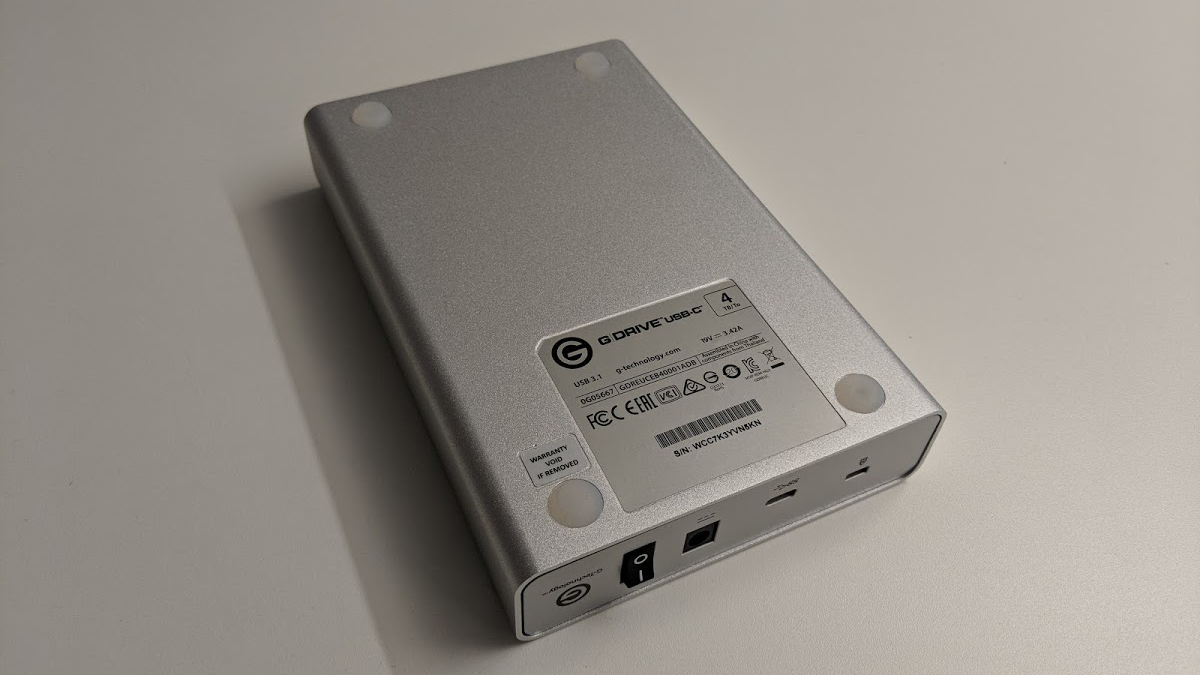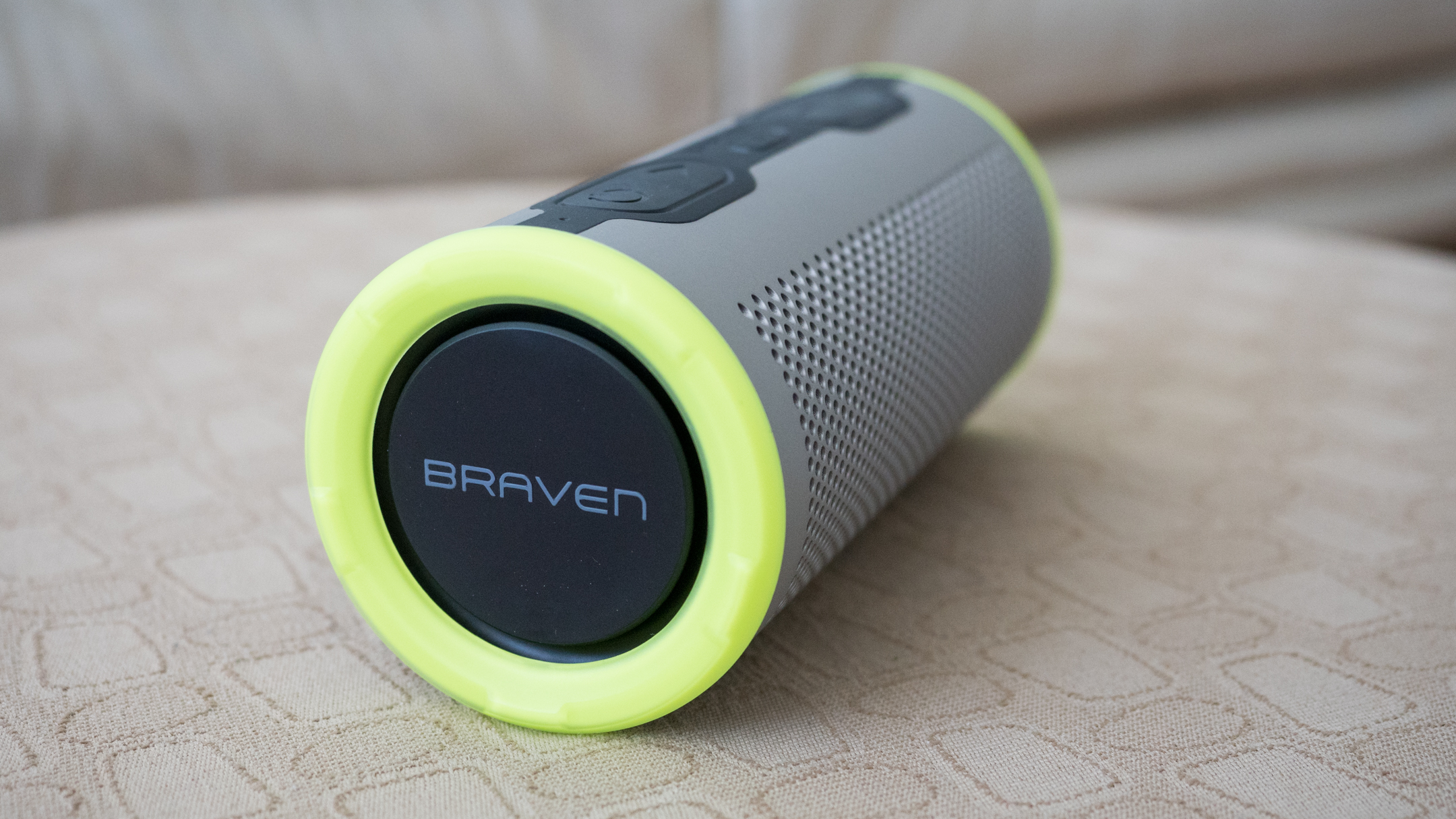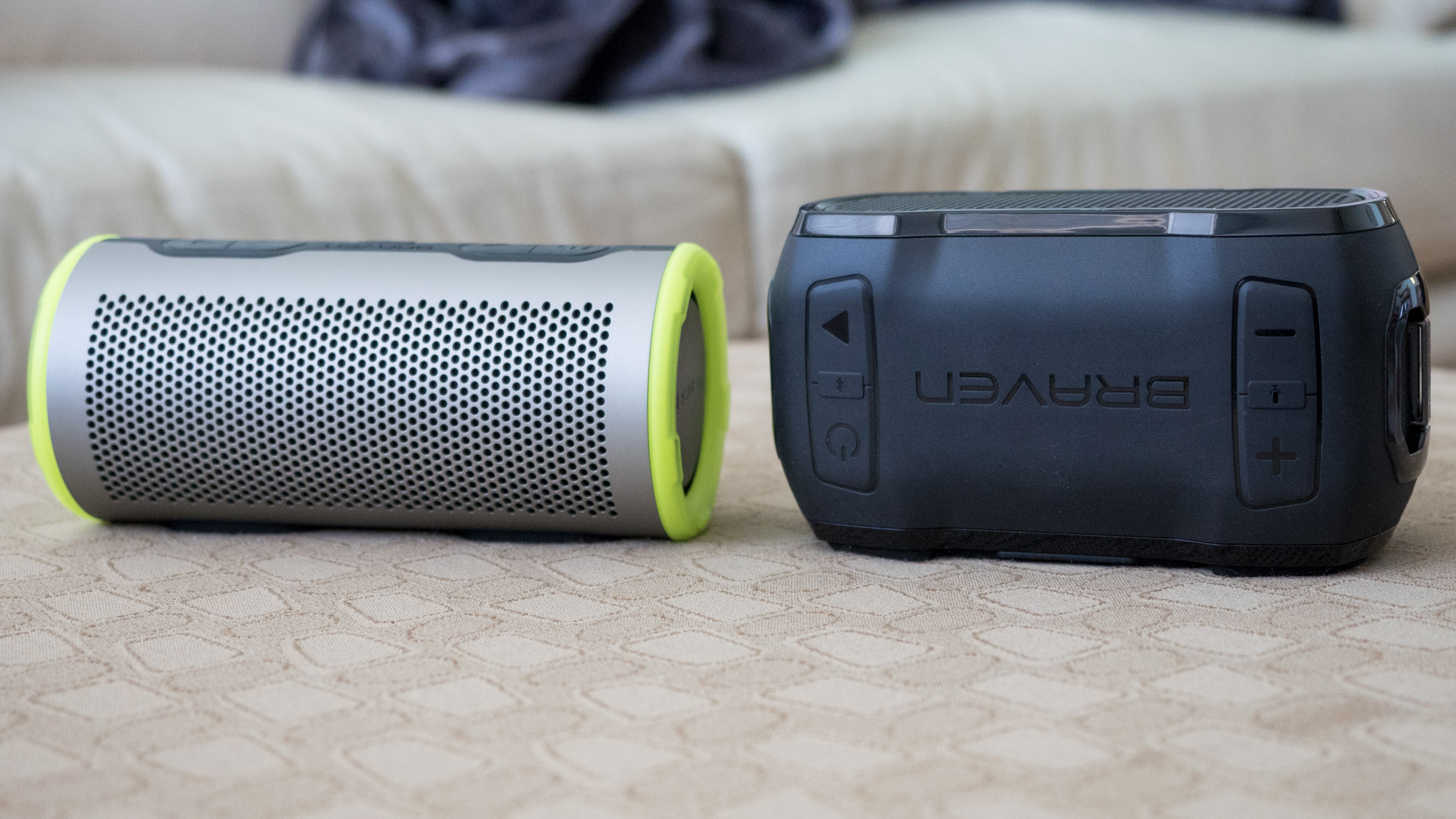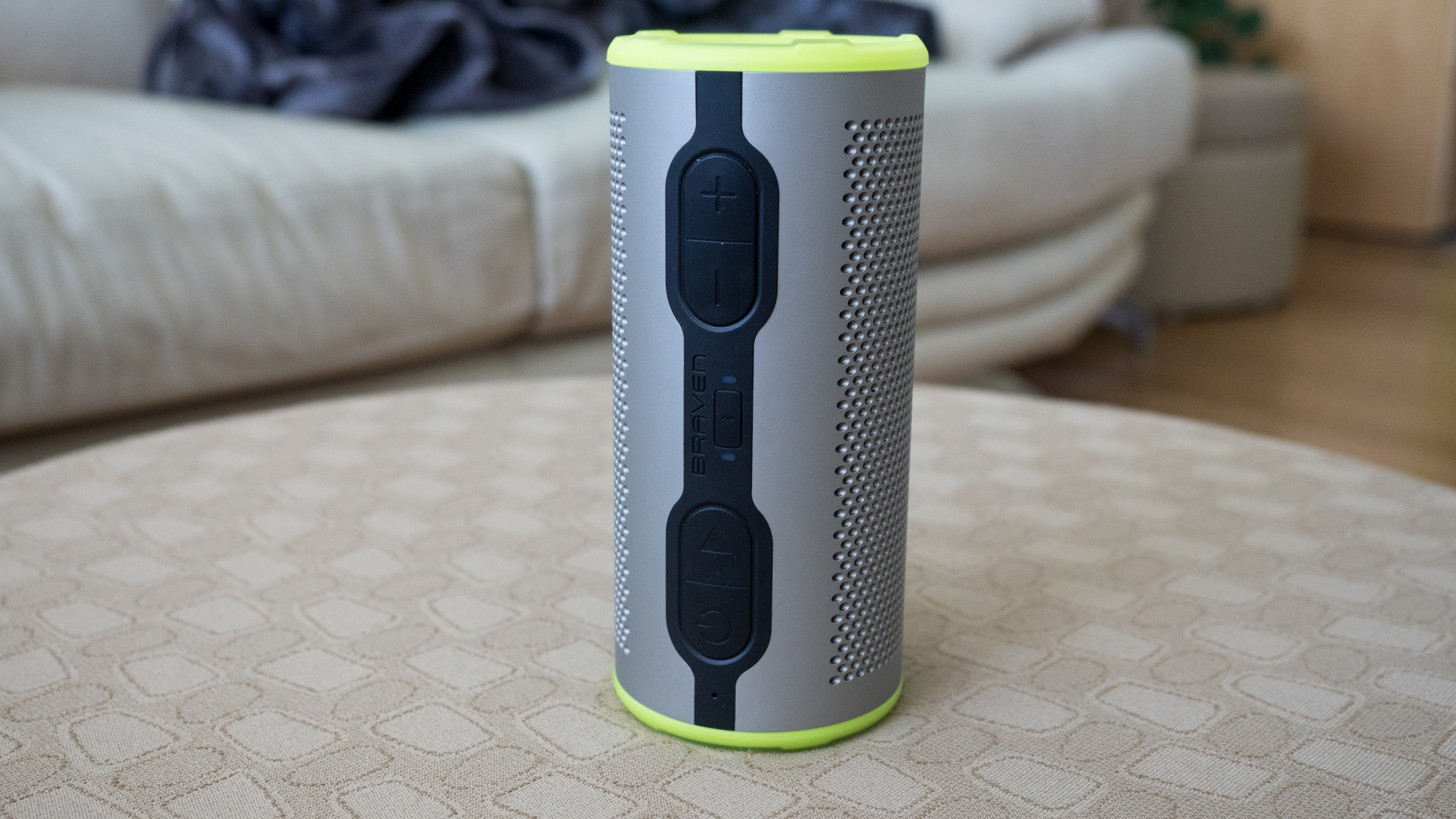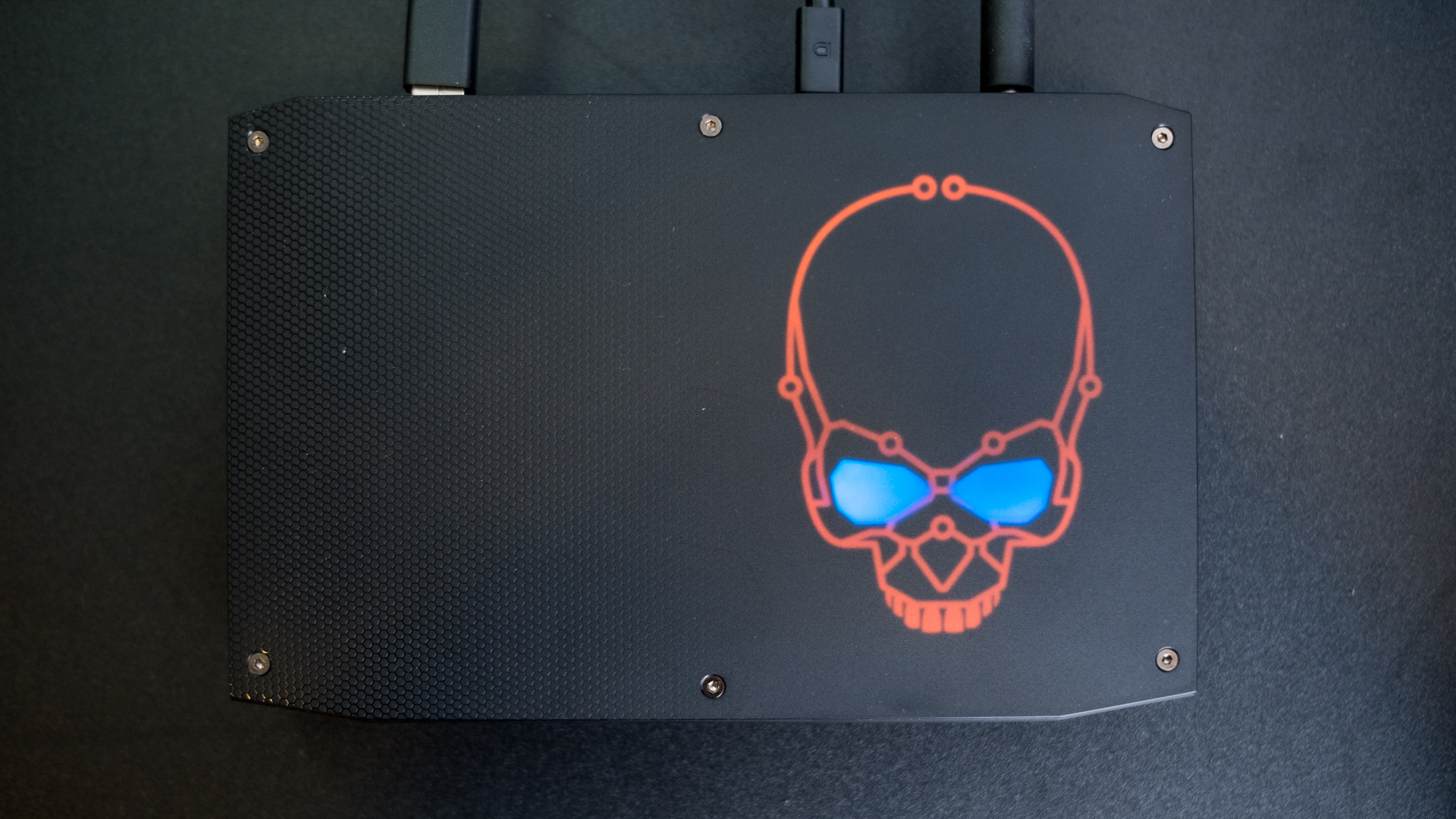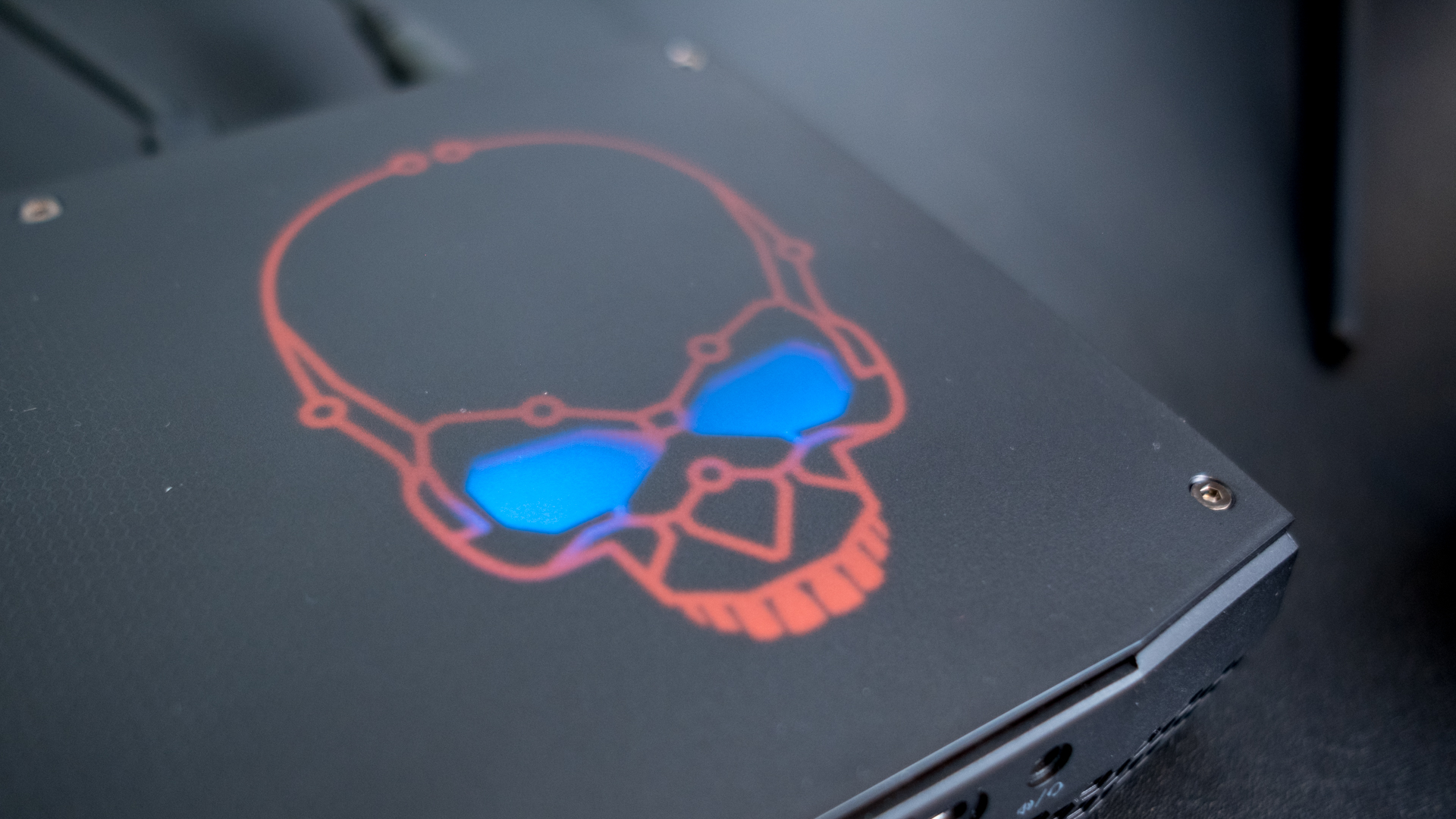The Garmin Forerunner 645 Music is the watch that’s designed to fix the brand’s biggest flaw with its running trackers: the lack of entertainment.
If you’ve been exercising for any amount of time, you’ll know that Garmin offers some of the best running watches around - but they’ve been largely functional, just showing you performance numbers.
But with the likes of the Apple Watch 3 and Samsung Gear Sport encroaching on this space, bringing both GPS tracking and the ability to stream music to a Bluetooth headset, Garmin needed to catch up.
And finally, it’s begun that journey, adding in the capability to listen to tunes, audiobooks or podcasts on the go, as well as being able to pay contactlessly from your wrist (although that feature's not supported by a huge number of banks yet). But it’s not going to be cheap...
Garmin Forerunner 645 Music price and release date

Here’s the thing that will probably stop many in their tracks: the Garmin Forerunner 645 Music is going to cost around £399 / $399 (around AU$520) - which is a lot of any kind of running watch.
You can get a model without music for £350 / $350 (around AU$440) - but that would really strip it of the main USP.
While you’re paying for some impressive features, it’s also worth noting that TomTom has been offering running watches with music playback capabilities for years, and for a much lower price. However, with these likely to be slowly coming off sale in the coming months, there’s an opportunity for Garmin to jump in.
The Forerunner 645 Music is already available, with the release date landing in February 2018.
Music
- Streaming music isn't supported yet
- Can put on MP3s and audiobooks from your PC

Right, let’s get into the groove here - music is the main reason Garmin fans will be buying this watch. And we’re here to tell you that the experience is disappointing for a running watch in 2018.
The Forerunner 645 Music got the right bits to be a great little entertainer on the go: 4GB of internal storage should carry 500 songs with you, and deals with iHeartRadio and Deezer will give you access to reams of tunes.
But those two services don’t yet have the requisite apps on the Garmin ConnectIQ store, which means you can’t transfer any streamed music onto your watch. Which is pretty terrible given the main reason you’d buy this device is to have access to millions of songs - and Garmin doesn't know when it's coming.
So you’re left with putting your own MP3s on there, and if you’re still someone that’s got a vast digital music collection, you’ll be fine.
The downside comes when you find out what you’ve got to do to actually get them on there - fire up your computer, open up Garmin Express (which most won’t have ever done, given they’ll have only ever paired with the app) and then search for the songs on your machine, before getting them sent to the watch.

While audiobooks and podcasts are supported, there’s no way that most people would bother putting them on the watch through the PC. It’s just so, so much easier to listen to them from the phone that we would rather just bring our handset with us - and to be honest, we feel the same about listening to streamed music... it's just so much easier on the phone.
But if you do go down the route of putting music on your Garmin Forerunner 645, the experience is fine. It’s nothing special, and precisely the same as you’re used to on something like the TomTom Runner or most smartwatches on the market - choose from albums, playlists or shuffling all songs.
It’s quite tough to get used to the nuances of the interface by moving up and down and pressing enter, but it’s understandable enough after a while. The main thing is being able to easily change your tracks while running, and that’s possible here.
If you want to change album or playlist on the go it’s quite a few presses, but actually having a physical button is easier than trying to do this with a touchscreen when sprinting around.
The music playback is supposed to be a massive feature of this watch, but not having Spotify was already a hindrance… not having any music streaming services ready at launch is terrible.
Design and screen
- Lightweight design
- Lovely look
- Large screen

One of the most striking things about the Forerunner 645 Music is the way it’s designed - apart from some of the hyper-expensive fashion-led Fenix models, it’s the most attractive Garmin watch out there.
The impressive feature is the metal rim around the edge of the 1.2-inch display - it not only protects the Gorilla Glass 3 that covers the display, but adds a more industrial, yet stylish, look to the watch.
The other thing is that feels really light in the hand and on the wrist - at 42.2g it’s much lighter than the Garmin Forerunner 935, for instance, and puts it more in line with the Forerunner 735XT.
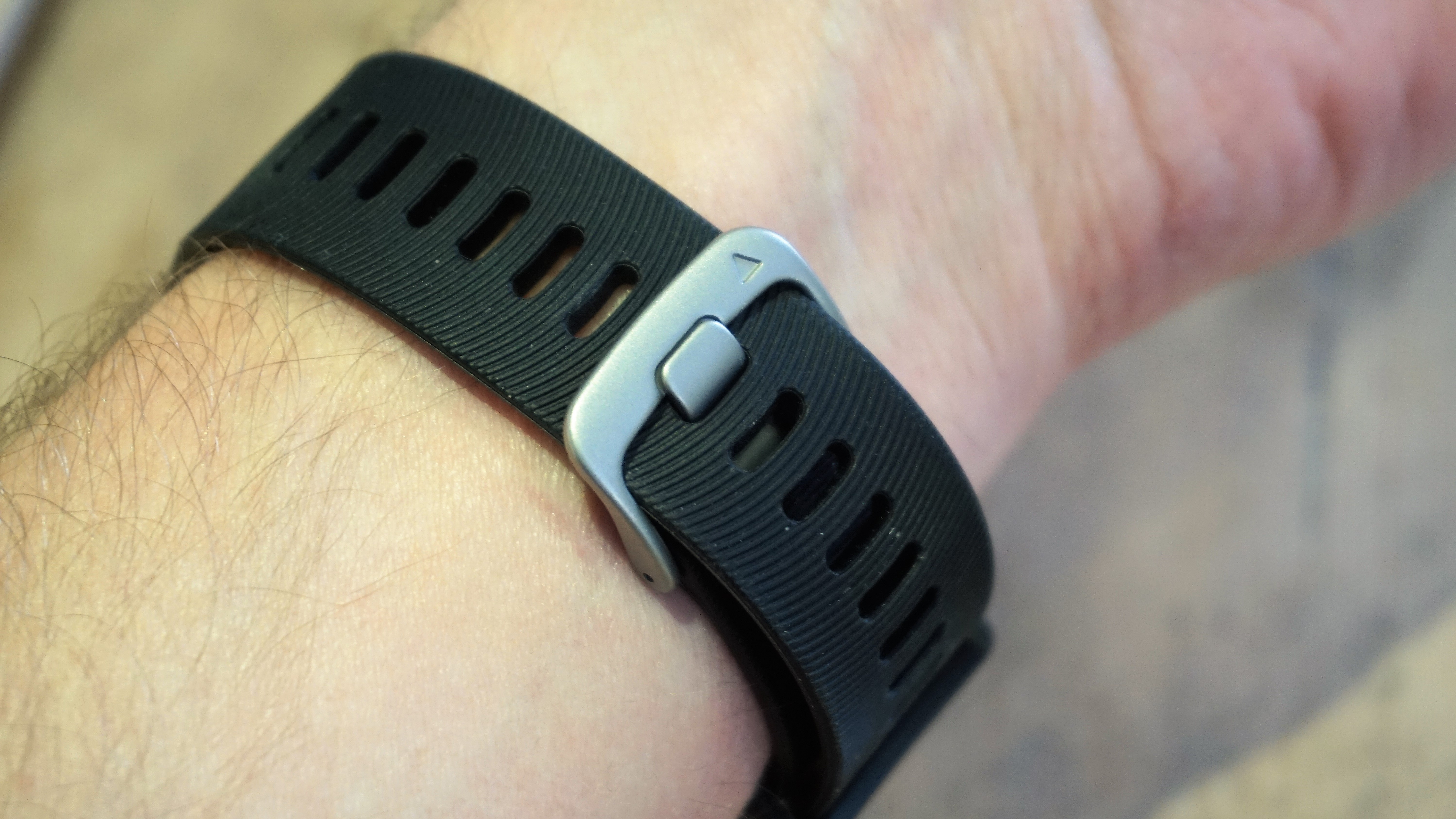
That loss of weight is partly to do with the smaller battery though, and as you’ll see later that comes at a cost to the function of the watch.
The strap is silicone and also pretty lightweight - it feels comfortable on the wrist, although those with sensitive skin might need to swap it out. Thankfully you can use any 20mm strap here, thanks to the standard lugs.
The screen, like many Garmin running watches, is transflective technology, which makes it clear and bright in most scenarios when light is shining directly on it, meaning it catches even a small amount of photons pretty well to help you see what’s on the display.
If you’re in the dark there’s an illuminating light, and Garmin has done pretty well with the accelerometer to make the watch light up whenever you raise your wrist - to do this on a run is pretty advanced.

The screen itself is very clear, and a had a nice degree of sharpness. It’s not in the same league as many modern smartwatches, granted, but it’s more than good enough in day to day use and we never were unable to see the numbers when out on a run.
And really, that’s all that matters. The rounded display can make things a bit congested when you’ve got four different bits of data on one screen, but even then it’s easy to make out what’s being shown.
The only slight downside is that colors are a little muted, but that’s the price paid for the transflective technology.
- Loads of fitness options
- GPS is rapid
- Swimming, yoga and paddle boarding on there too
Take away the (admittedly useful) gimmick of music playback and you’re still left with a Garmin sports tracking watch - and like the other members of this family, it’s excellent in this regard.
Once again eschewing the touchscreen, everything you do with the Forerunner 645 is through the buttons around the watch, and it means it’s very easy to start, stop and flick through exercise data at any point.

The heart rate monitor on your wrist is one of the more accurate we’ve tested… so much so that we didn’t ever feel the need to use a strap on our chest when out testing.
When testing the Forerunner 645 in extremely cold weather, we did find that it struggled to pick up our pulse, so if that’s going to be a regular for you then we suggest you invest in a chest strap.
This also unlocks some more of the running dynamics that some might like, such as ground contact time and vertical oscillation. Honestly, we rarely use this feature despite it being rather interesting to see your actual metrics, like which foot impacts harder each stride.
Unless you’re training very specifically and have a coach, we’d say you can skip buying the heart rate monitor or foot pod you need to enable this.

One thing you will like with the Forerunner 645… the GPS is rapid to lock. Seriously, one of the best we’ve seen and even without being constantly connected to your smartphone.
If you’ve not had your phone synced for a while it can take a little longer (in a new built up area with no phone connection it took nearly two minutes, but the next time was instant), so if you’re in a recognisable or open area we’re talking a few seconds before you’re off and running. It’s excellent.
You can also create interval sessions right from the watch too, which is nice if you’re in the mood for something a little more advanced - and there are little beeps that count down when you’re about to move into the next phase.
Sadly these don’t translate to audio in connected headphones, but you do get your laptimes if you’ve got the feature enabled - on a twenty mile run it’s nice to have someone soothingly telling you your last mile time, although it can get a bit mixed up and robotic.
If you want something a bit more technical in your workout, you can set a session directly from your phone and sync it right to the watch - perfect if you want to do sprint repeats followed by a long run, or switch between power and pace on the bike.
Running

The main thing we used the Garmin Forerunner 645 Music for during our testing is the running capabilities - and it’s pretty darn good for them.
It’s not a lot different in look or function to the Forerunner 935 or the Fenix 5X, with the ability to see your heart rate, distance, pace, time, averages of all the above and even the time the sun is going to rise and set.
In short, there’s very little that can’t be shown on this watch when you’re running, and customising your screens to what you like to see can be done in seconds, as we found just before beginning and realizing that we’d put in actual pace rather than average pace a data field.
The accuracy of the GPS was pretty good - perhaps a little generous over a longer run, with two long runs of 18 and 20 miles showed us running 1% further than the measured distance.
It’s not big deal, but in a marathon that 0.2 extra bit of a mile can be a bit disconcerting if you’re trying to run to a specific pace, although we didn’t find it a tremendous problem.
Over shorter distances it was fine, and treadmill running proved pretty accurate too - after your first session you’ll ‘teach’ the watch how far you’ve gone and it’ll offer better distances form that.
Cycling

One of the nice things about Garmin watches is their compatibility - while there’s still too much reliance on Ant+ sensors (the old version of connectivity before Bluetooth), the fact both Bluetooth and Ant+ are supported means pretty much any cycling accessory can be connected.
That means power meters, turbo trainers, bike lights and even cameras can be operated from your watch on the go, and that’s pretty easy given the large screen and simple-to-press buttons.
Just like the running mode, there’s not a lot to really say here other than it worked fine, the screen is bright and legible and having that audio feedback on a cycle is even better than on a run, as you can less easily glance at the display when cycling along.
The heart rate monitor also stayed pretty true during our pedalling, reacting well to changes in effort and helping us push harder in the interval sessions we set up from the Forerunner 645.
Strength training

It’s really great that so many watch manufacturers are trying to track gym efforts, and Garmin recently introduced the same thing.
The idea is that the watch uses the accelerometer to read the motion of each exercise, something called its ‘fitness envelope’, and then count how many of those motions you’ve done.
You can then set how heavy the weight is afterwards, thus giving an accurate measure of how hard you’ve worked.
It’s a nice idea....it doesn’t work. The rep counting is so often off unless you’re doing the motion very slowly and to the exact parameters each time, which many can’t manage nor want to do.
In order to preserve the fitness envelope Garmin recommends you don’t look at the watch during the set, so the motion is consistent - so you can’t even check how many reps you’ve done.
It’s also a little irritating having to enter the weight using the up / down keys every time, so in the end we just stopped using the feature.
The rest timer on there is pretty good though, allowing you to make sure you’re allowing enough time between each action - and you can see each element after.
You can even pre-prepare your workout on your phone, coding in the exact exercise you want to do (and there are loads listed on the Garmin database) and it’s nice to just plug in and go.
However, you’ll need to be quick to spot which exercise is coming up, as it doesn’t stay on the screen long and there’s no way to call it back up.
The Garmin Forerunner 645 Music is only any good for strength training if you’re willing to correct the number of reps and weight after each set - and it’s just too much hassle.
That said, it’s nice not to have to carry your phone around to listen to music.
Other exercises

It’s rather impressive what other exercises the 645 Music can track, thanks to the accelerometer and altimeter being able to assess motion and elevation.
You can ski and snowboard, or swim in a pool and have the lengths and distance tracked. However, open water swimmingg isn’t allowed for some reason, despite all the right sensors being in there, and inexplicably there’s no triathlon mode.
Given that last mode is just being able to stitch together a swim, run and cycle into one activity, with transition timers in between, it’s very strange Garmin hasn’t added it in.
Paddle boarding, yoga, step / elliptical / rowing machines in the gym are all supported too - while not perfect thanks to some weird omissions listed above, the Forerunner 645 is generally a very good sports tracker.
- Battery life is poorer than other Garmin watches
- Around 10% battery lost per hour
Here’s the biggest issue we’ve got with the Garmin Forerunner 645 Music: it’s got poor battery life for a watch from this brand, when its watches are usually sterling at lasting.
Given it’s got the same screen size and operating system as the Forerunner 935, which can last for up to 10 days with daily activity, it’s maddening that the 645 can only manage 3-4 days.
What’s weird is it’s not the GPS tracking that munches the battery, nor the music playback. It’s just in general use that the issues come, with it falling to 8% after 16 miles run and a Bluetooth connection to a phone over four days.
Some more stats: we charged the watch to 100%, and took it on a 20 mile training run with music playback the entire time.

By the end of the run it was down to 65%, after 154 minutes of running. That’s not a bad stat at all, meaning even seven hour marathon runners should be able to track their race and have music the entire time. A good result.
But by the next day, we’d lost another 20% of the battery without any more GPS tracking or music playback… just having the heart rate and step tracking on.
It means you can’t feel confident in always having battery ready for a run like you do with other watches in the Garmin range… and it’s a shame.
Garmin is quoting five hours battery life in GPS mode, which is a lot shorter than many others in its watch line-up, so it knows that this is going to be one of the poorer options when it comes to holding charge.
If you’re going to exclusively use the Forerunner 645 for running with tunes, then you can expect a drop of 10-12% every hour of running, dropping to around 6-8% if you’re not using the Bluetooth streaming - with a similar result from cycling, as you’d expect.
So as only a running watch, it’s pretty good. But as a top-end all-day fitness tracker, as the Garmin watches often are, it’s quite poor.
Interface and activity tracking
- Slow interface
- Activity tracking is excellent

One of the more irritating things about the Garmin Forerunner 645 Music is that the interface is really, really slow at times.
We’re talking pressing a button to start a run and waiting two to three seconds just for the screen to change - even just taking a quick peek at your heart rate by pressing the down button will take a second.
It’s a long way from the snappy interface of the Apple Watch 3, and seems quite poor for a watch of this cost.
However, what the Forerunner 645 Music does do well is fitness tracking - like most of the high-end Garmin watches.
Sleep, step, heart rate and even stress tracking are all very well presented on the watch, meaning there are few devices that offer a more complete experience in terms of showing your overall fitness level.

The stress testing is among the most impressive, with the ability to read your heart rate variance (the difference in shape of each heart beat) and from that discern your stress levels.
It’s very accurate, and provides great insight - like how when you’re on a long-haul flight you’ll have a higher level of background stress than if you’re just sitting quietly at work or at home, which explains why long flights are always so much more stressful.
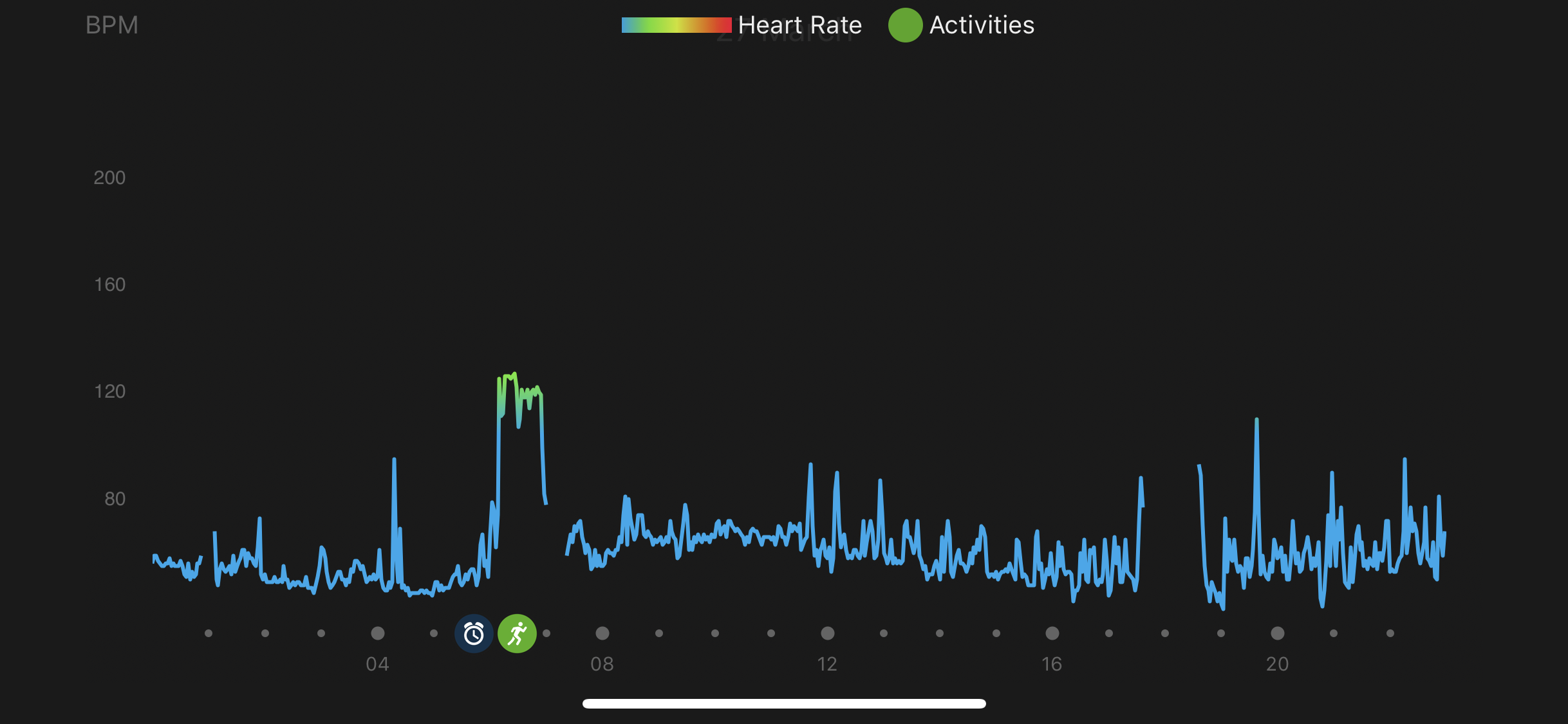
That heart rate variance can also pinpoint accurately your lactate threshold, meaning the Forerunner 645 can tell you with good accuracy when you’re going to start tiring in a race. It’s not a new feature to Garmin watches, but it’s really advanced and useful.
There’s also the ability to use the Forerunner 645 Music as a smartwatch, with the Bluetooth connection firing messages and phone calls to your wrist so you can respond or dismiss them accordingly.
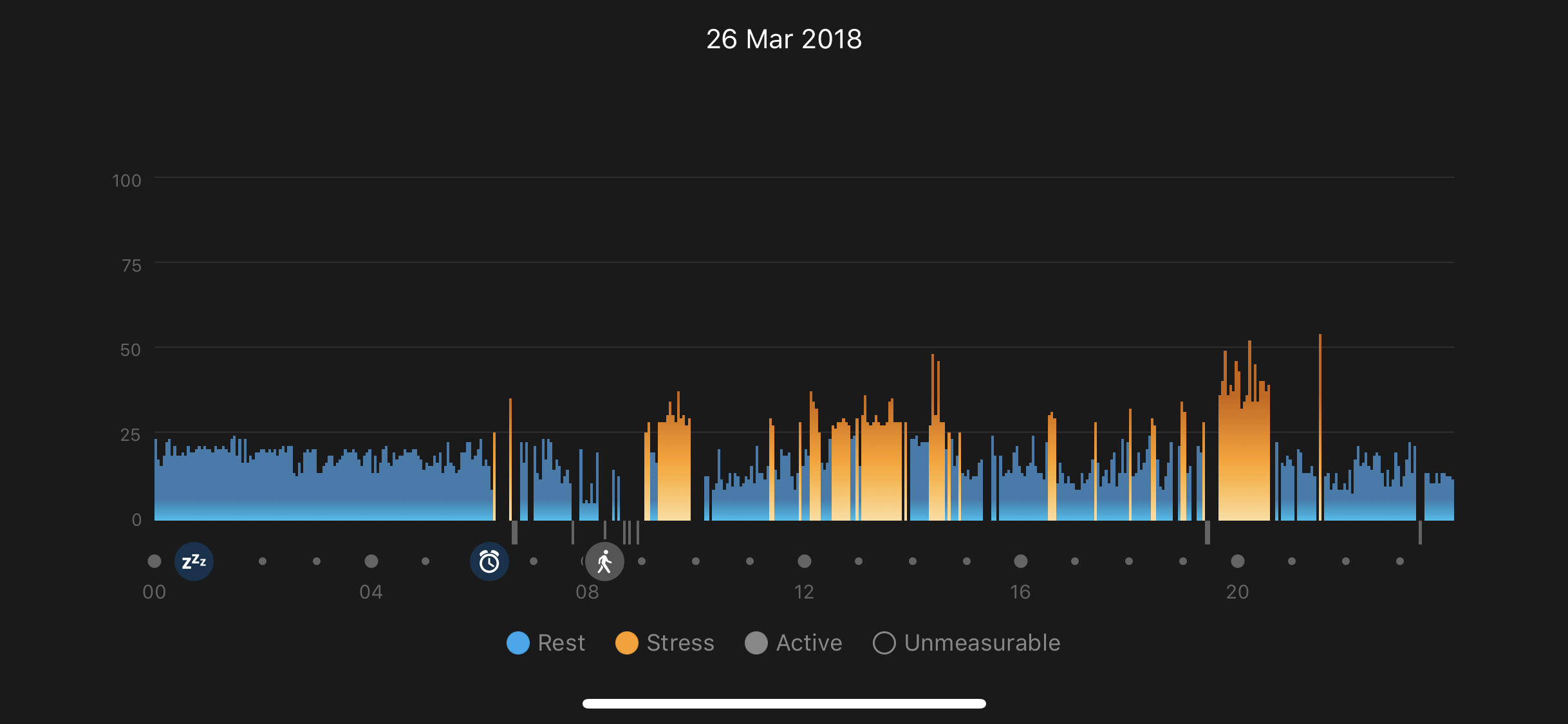
If you’re using an Android smartphone you can even like certain social media posts or archive email - while rudimentary, we didn’t find we really wanted a lot more from a connected screen on our wrist, making the Garmin Forerunner 645 Music one of the better smartwatches around.
On top of all that, you’ve got the Garmin Connect app, which not only gives insight and advice on your fitness streaks (useful, if not a little rudimentary) but also gives long-range looks at your fitness levels.

Being able to see how your resting heart rate has improved, see how your daily stress level has moved or how well you’ve been sleeping is really cool, and all covered pretty accurately.
It would be nice to see this information used in a more cohesive way, fusing all three together with your effort levels in a run to give tailored information on how best to exercise, but that will surely come in the future.
From this app you can also download new watch faces or ‘apps’ from the ConnectIQ store, but these are little programs that add a small amount of functionality to the mix and aren’t super professional in the way they look - although you can get some nifty watch faces.
The Garmin Forerunner 645 Music is a disappointing fitness watch in a number of ways. There are lot of features on here that should make it one of the best running / sport-tracking watches around...but it misses out.
With a contactless payment on board, access to millions of songs and a new stylish design, it should have leapt to the head of the Garmin pack as the poster child of the next generation of sports watches from the brand.
But instead it feels like a halfway house that doesn’t quite manage to sit well in either camp and is out-performed by other watches in the range.
Who's it for?

Those people that don’t like to run in silence but hate having a bulky phone strapped about their body - they’ll love the convenience here.
Also, if you’re looking for a smart fitness watch that looks good on the wrist, then you’ll probably like the metallic rim around the bright and visible screen… it certainly looks the part.
It’s also smaller and lightweight, so those with more delicate wrists would probably gravitate towards this watch.
Should I buy it?

Unless you’re precisely the person described above, then no… don’t buy this watch, at least not right now.
It’s too expensive for what it offers, which is poorer battery life than other Garmin models, and it’s shorn of its headline features.
Without music streaming services added in, it feels like the 645 Music is unfinished, and while it can to contactless payments a lot of locations and banks aren’t set up for it yet.
The slow interface irks, and while the GPS lock is brilliant (seriously, we’re so impressed, as you can probably guess from the rest of this review) there aren’t enough unique, redeeming features of the 645, as all the good bits are available on other watches.
If the Garmin Forerunner 645 Music actually came with something like Spotify and the contactless payment was as widely supported as Apple Pay, maybe the buying advice would be different… but combined with the high price and poor battery, it’s a tough sell.
- First reviewed March 2018
Competition
Not convinced by the Garmin Forerunner 645? Try these on your wrist instead.
Garmin Forerunner 935
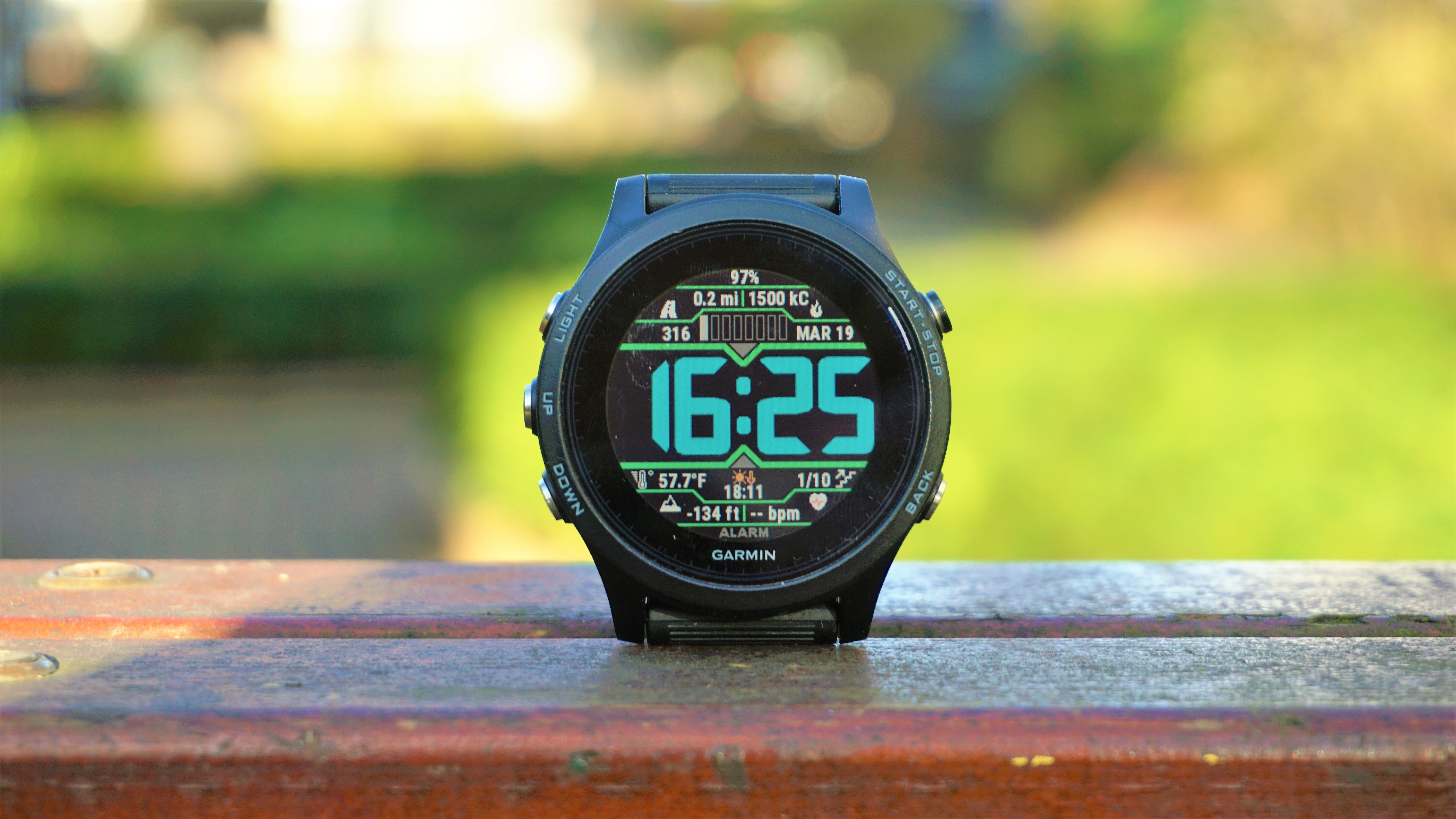
The Garmin Forerunner 935 is roughly the same price as the 645 Music, but can track more activities, has a longer-lasting battery and more rugged casing.
In short, unless you’re desperate to have music and a more stylish-looking watch on your wrist, we’d thoroughly recommend this model, as it does all the 645 does and more.
Read the hands on Garmin Forerunner 935 review
Garmin Forerunner 735XT
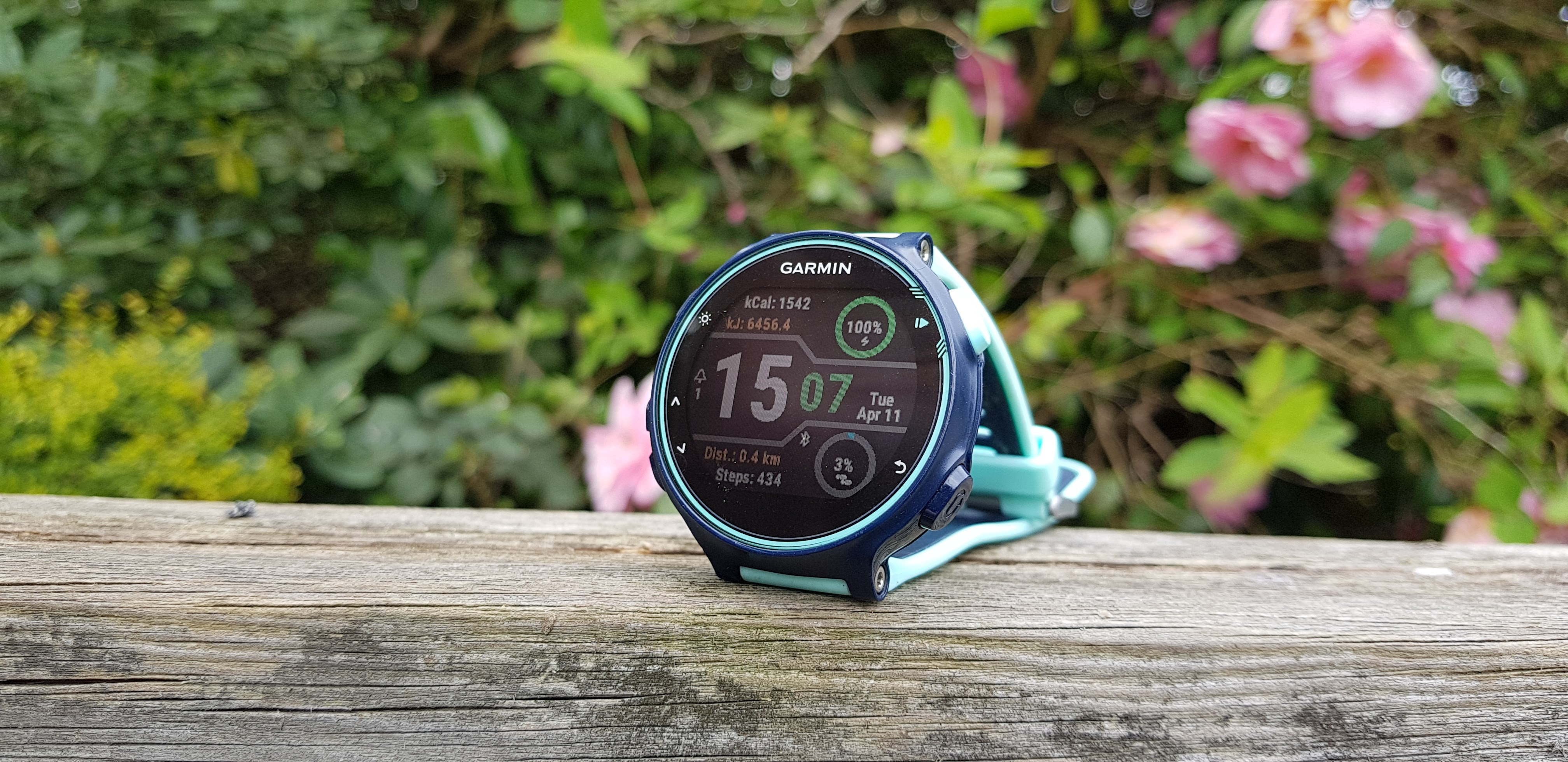
If you’re not sold on the 645 Music and don’t want to spend as much, then the 735XT is your next best bet.
It’s shorn of the music, doesn’t look as premium and lacks things like strength tracking and stress monitoring, but it’s a slick and lightweight watch for less, and is brilliant for triathletes in particular.
Read the full Garmin Forerunner 735XT review
Suunto Spartan Trainer Wrist HR

The latest watch from Suunto packs an excellent heart rate monitor, a smart route finder in the app and a clean and usable interface.
It’s not as fully-featured as the Garmin, but is more rugged and offers better navigation capabilities from the wrist too.
Read the full Suunto Spartan Trainer Wrist HR review

